manxnorton
Established Member
Good examples, Custard.
With one hand, the marking out is the area of difficulty as it is balancing two parts together and keeping them steady while the work is done.
Here are a few suggestions:
1. I'd go tails first here. It will be far easier as marking the tails from the pins - that is too fiddly.
2. Sawing tails should be done without any marking out (other than the baseline - clamp board in vise to steady it). Just approximate the angles and saw. I would also forgo the saw guide - that is also fiddly to move into position and clamp.
3. Transferring the tails to the pins is best done with two aids. This first is David Barron's dovetail board. This will align the sides of the two boards. Clamp the boards down.
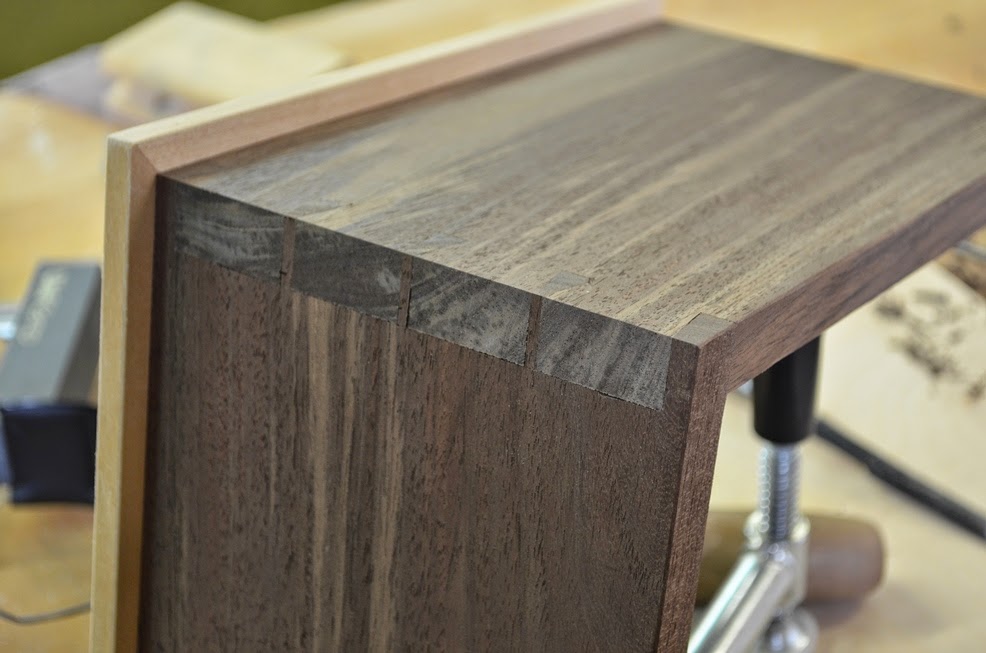
The second is to use blue tape. This allows for a single knife mark to be made, and with less pressure than directly into wood. It is the paper tape that is cut, and then peeled away. Plus this gives one a second chance - remove and reapply the tape if the marks move.
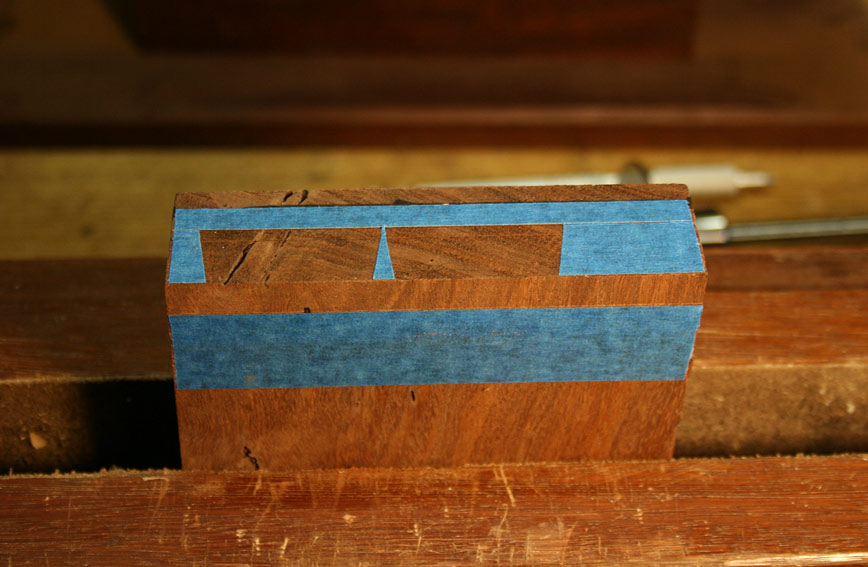
Here are two links:
http://www.inthewoodshop.com/Furniture/ ... eTape.html
http://www.inthewoodshop.com/Furniture/ ... ails3.html
4. First undercut for a knife wall, and then use a fretsaw to remove most of the waste ...
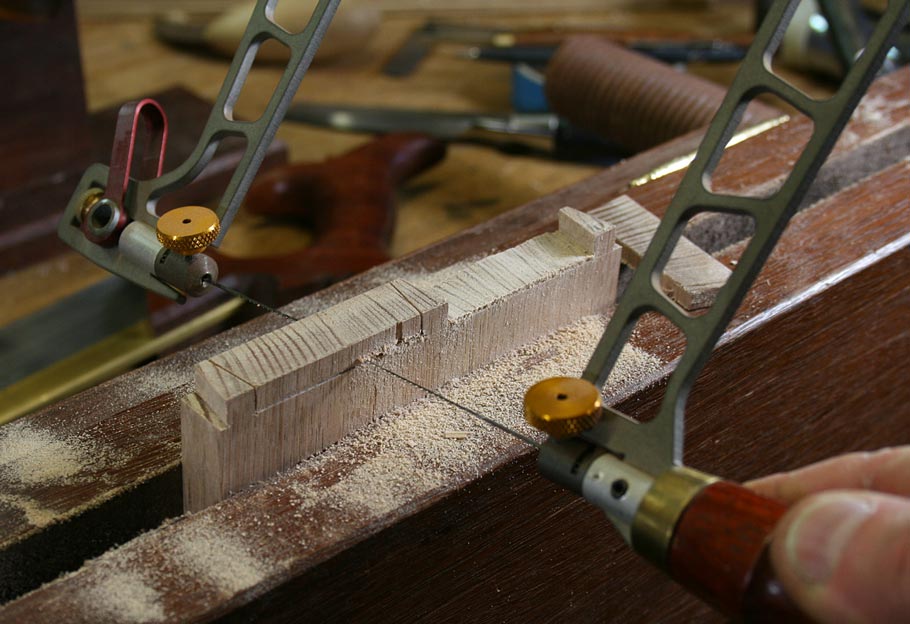
5. Waste is removed by paring thin shavings. It pays to remove as much as possible beforehand. The fretsaw (above) is essential here. Learning how to use it is important. Once this is done, use a very sharp bench chisel with a short, squat handle to push down. A traditional paring chisel is not indicated for one hand use. A standard bench chisel may not offer enough area to maximise down force. My thoughts run to something along the lines of my awl ...
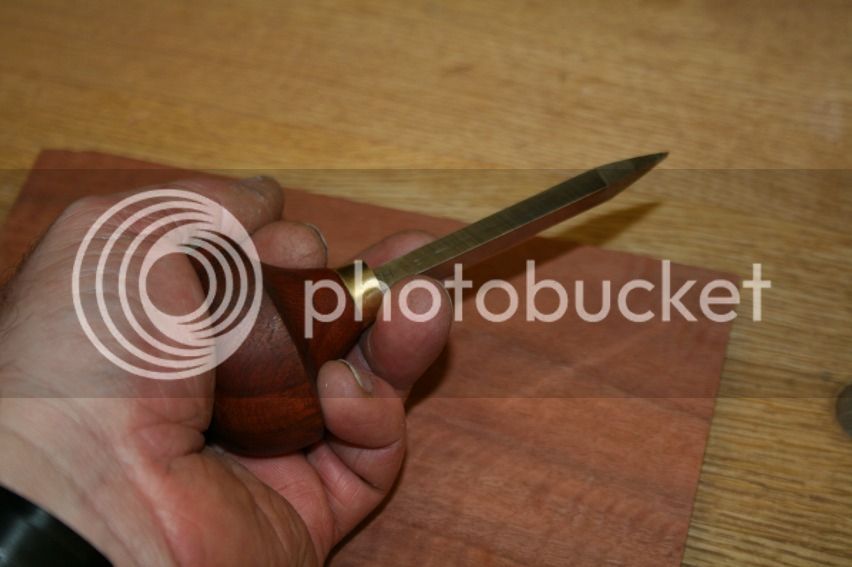
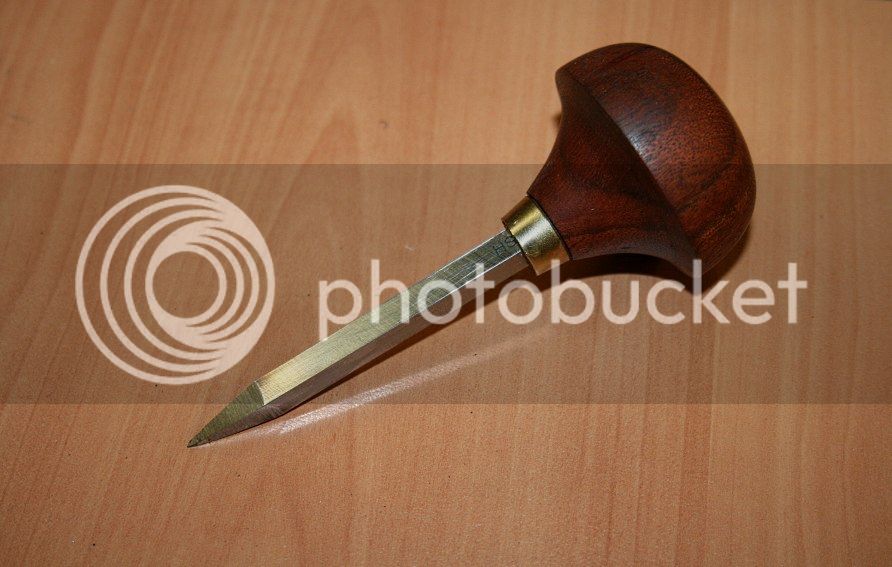
This Narex butt chisel would be great (short is more controllable than long, and a wide handle that may be pushed with the palm) ...

Regards from Perth
Derek
M8!
Great advice.
The Narex butt chisel would be great for me to use!
Obviously I've got keen interest on this thread coz I'll use custard thread to make my project as best as I can!
Any probs along the way, I just shout out and done nowt til I can fathom out the next stage.
I'm nearly done buying certain aids I will need and then pop over to Bri's projects and inform you all I'm ready to start!!!
Nervous as!! Lol
ATB
Bri




